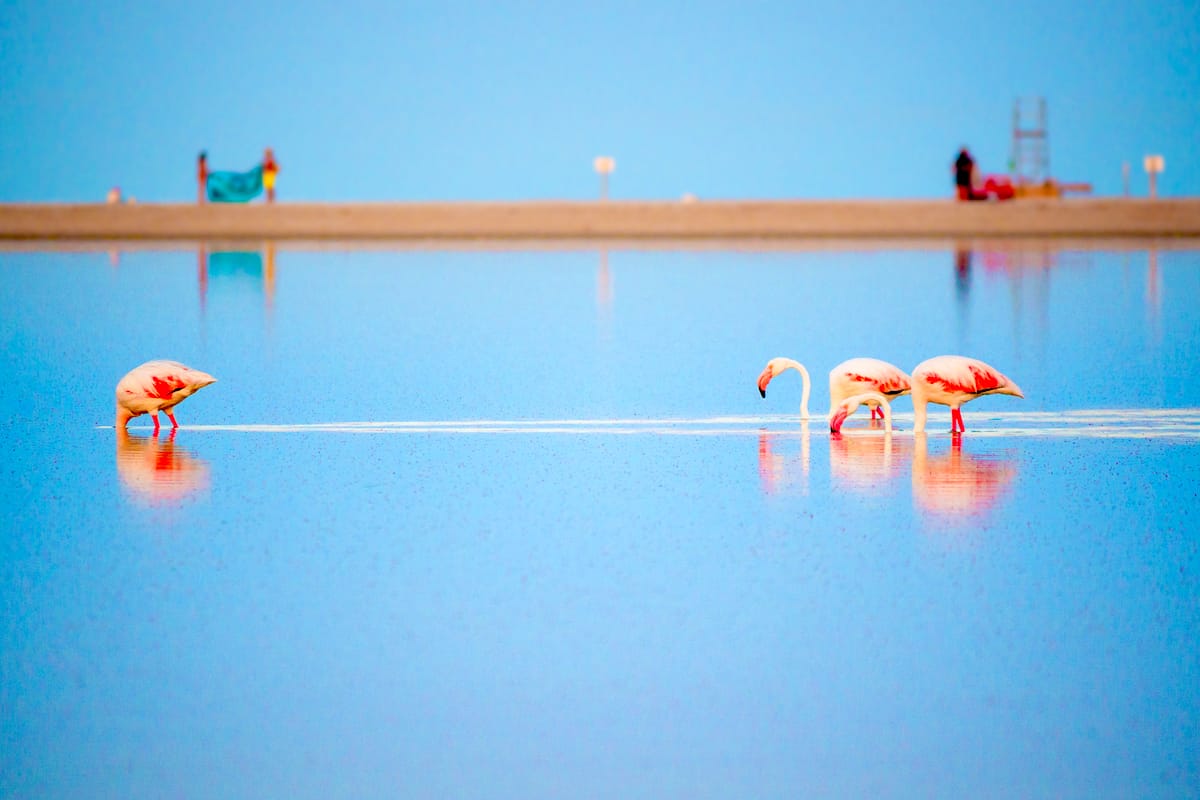Sardinia is an important stopover point for migratory birds between Europe and Africa. The island is home to a variety of species, including the European bee-eater, barn swallow, common swift, European robin, and common nightingale.
The southern part of the island, especially the area surrounding Cagliari, is particularly known for its large colony of flamingos, which can be observed in lagoons such as Molentargius-Saline.
Here’s an overview of the best places to see flamingos in Sardinia, along with a few guided tours you can book safely in advance.
Molentargius-Saline Regional Natural Park
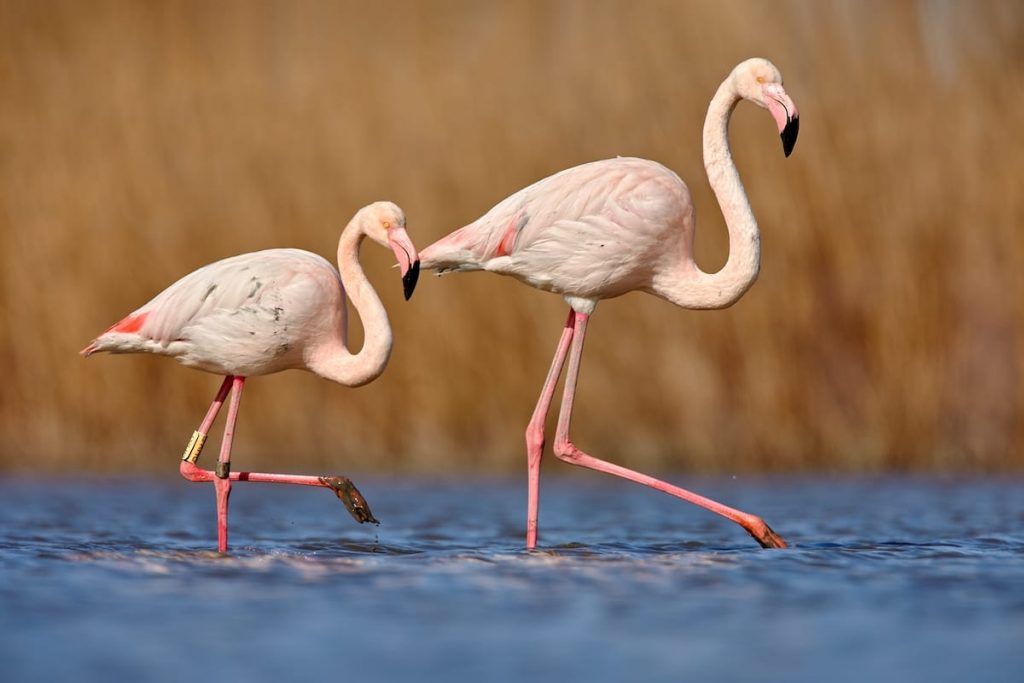
In Cagliari, you can see flamingos in the Molentargius-Saline Regional Natural Park.
It covers an area of over 1600 hectares and is home to a diverse range of flora and fauna, including a large colony of flamingos. The park includes a network of walking and cycling paths that allow visitors to explore the area and observe the wildlife, including numerous species of waterfowl, herons, and waders.
Parco Naturale Molentargius Saline also features a visitor center that provides information about the park’s ecosystem and the importance of protecting the wetland habitats that support migratory birds. Overall, Molentargius-Saline Regional Natural Park is a unique and beautiful destination for nature lovers visiting the island.
Book a Segway Tour to See Flamingos
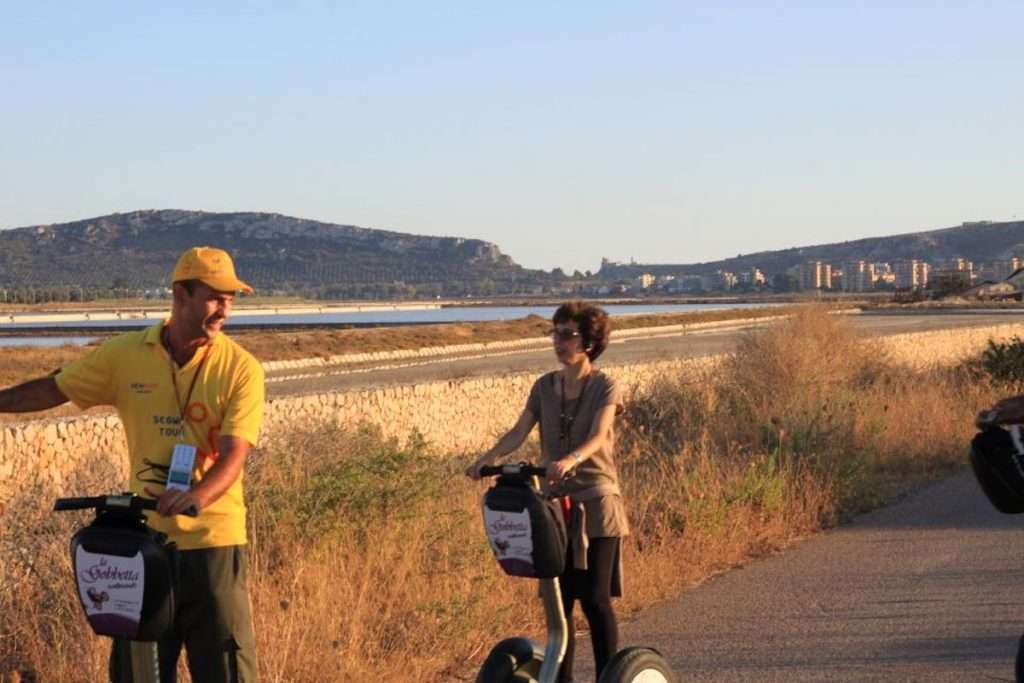
This tour offers a great opportunity to see flamingos in Molentargius-Saline Regional Natural Park.
On a Segway!
The tour starts from the Port of Cagliari and takes you on a scenic bike ride along the Palafitta channel before reaching the park. The park is home to the fascinating remains of the Old City of Salt, which has played a vital role in the local economy for centuries.
During your adventure, you can observe the beautiful pink flamingos that inhabit the fresh and saltwater basins within the park. This exceptional area also features a unique collection of plants and animals. You will also have a chance to take a pleasant break and enjoy a coffee in the park midway through the tour.
Book NowStagno di Cagliari
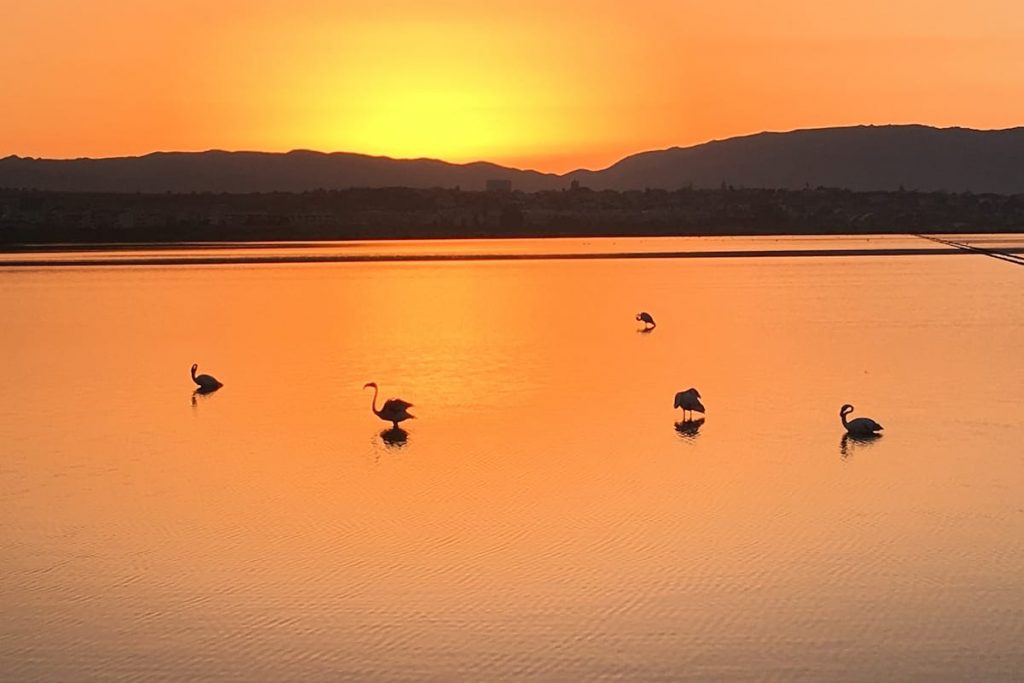
Stagno di Cagliari is located near the airport in the capital city of Cagliari.
It is a popular spot for birdwatching, particularly in the summer months when flamingos can be seen feeding in the lagoon’s shallow waters. The area is also home to a variety of other migratory bird species, such as marsh harriers and black-winged stilts. Visitors can explore the area on foot or by bike, using the trails that wind through the surrounding natural park. The lagoon is an important habitat for a range of wildlife and is protected by local conservation efforts.
Book a Private Sightseeing Tour and Spot Flamingos
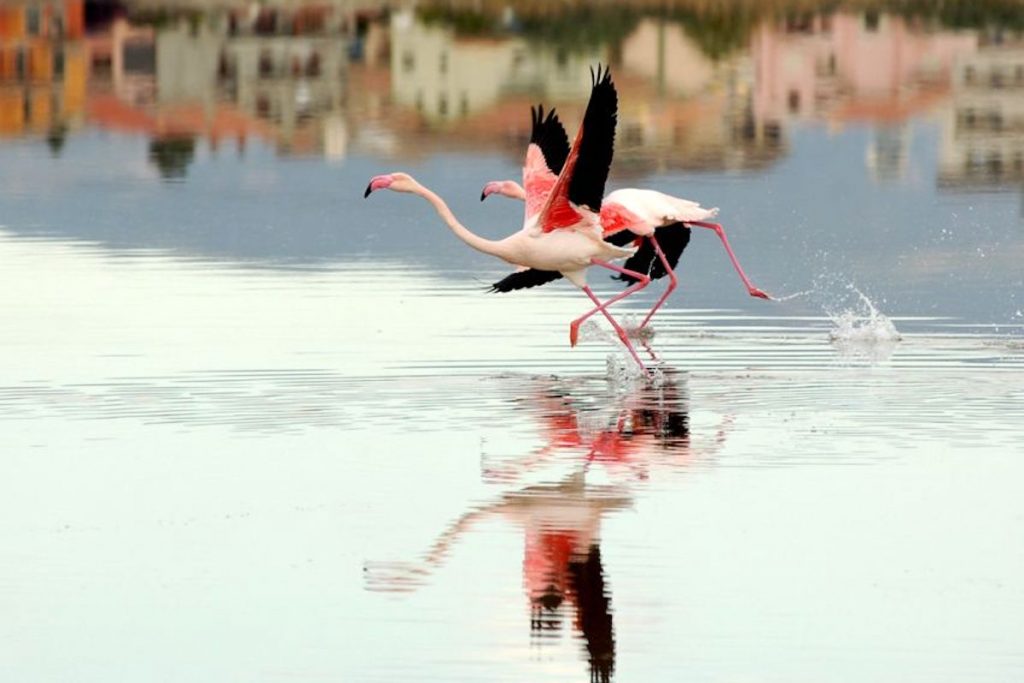
On this guided tour, you’ll embark on a private 4-hour guided tour to discover the charms of Sardinia’s capital city. Begin your journey along the bustling Via Roma, where vibrant porticoes shade busy shoppers. Then, hop into your private minivan for a scenic drive to the 6-mile stretch of sandy beach at Poetto, extending into the Balearic Sea.
Marvel at the pink flamingos dancing on the salt ponds at Stagno di Cagliari before stopping at the Basilica of Our Lady of Bonaria, a Roman Catholic shrine to the Virgin Mary. Next, it’s time for a walking tour of Cagliari’s medieval quarters. You’ll enter through the historic gates in front of the National Archaeological Museum, showcasing fine exhibits that recount the early Sardinian civilizations.
Book NowStagno di Notteri
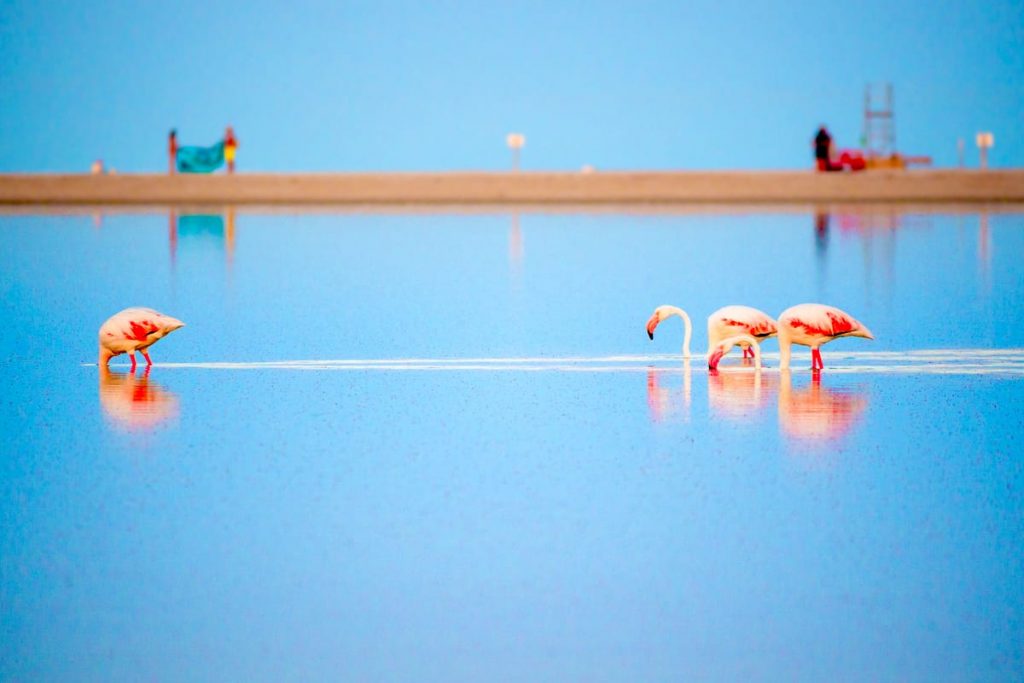
Stagno di Notteri is a lagoon that’s also located in the south of Sardinia, near the town of Villasimius.
The lagoon is a popular destination for birdwatching, with a particular highlight being its flamingo population. In the summer months, visitors can see flocks of flamingos wading in the shallow waters of the lagoon, feeding on brine shrimp and blue-green algae.
The Notteri lagoon is also home to a variety of other bird species, including the black-winged stilt and the little egret. Visitors can explore the area on foot using the network of trails that wind through the surrounding nature reserve, making Stagno di Notteri a must-visit destination for nature lovers visiting Sardinia.
Book a Villasimius Beach Tour to Meet your Pink Friends
On this guided tour, you will leave from the center of Cagliari to head towards the coast road that will take you to Villasimius.
Along the way, you will see the famous Devil’s Saddle and pink flamingos in the Molentargius Lagoon in Parco Naturale Molentargius Saline.
Continuing, you will be able to admire breathtaking views and take unique photos.
Book NowStagno di San Teodoro
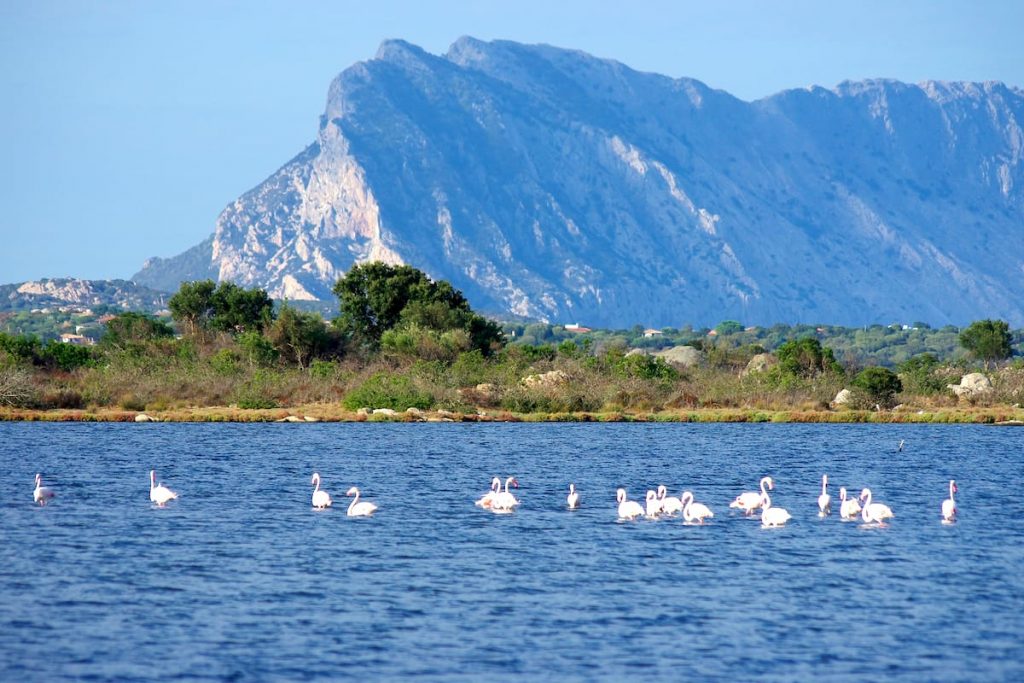
Stagno di San Teodoro is a lagoon located in the northeast of Sardinia, near the town of San Teodoro.
It is a popular spot for birdwatching, particularly in the spring and summer months when numerous migratory bird species, including the flamingo, can be seen feeding in the lagoon’s shallow waters. The lagoon is surrounded by marshes, reeds, and woodlands that provide a habitat for other wildlife, including otters and weasels. Visitors can enjoy guided tours of the lagoon or explore the area on foot using the network of trails that wind through the surrounding nature reserve.
Oristano
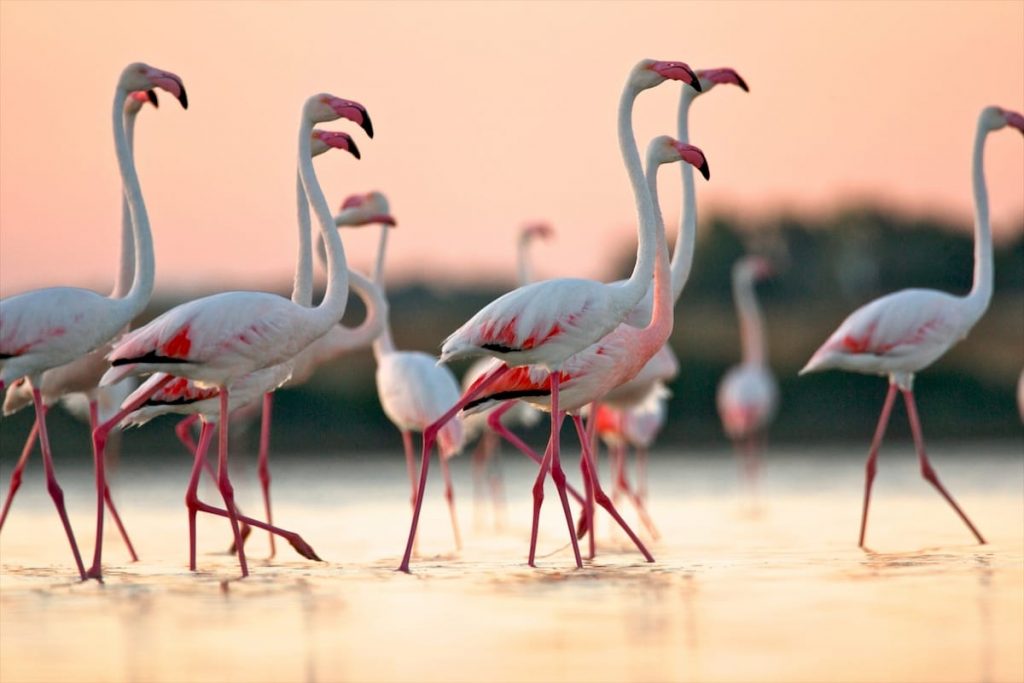
The best place to spot flamingos in Oristano is at “Stagno di Cabras,” a protected wetland area just a few kilometers from the city center. Stagno di Cabras is home to a large population of flamingos, and it is an excellent place to watch these beautiful birds in their natural habitat.
The wetland’s shallow waters, mudflats, and salt pans provide the perfect feeding and breeding ground for flamingos, attracting thousands yearly. Visitors can watch these graceful birds wading in the waters, fishing for small crustaceans and invertebrates, or resting on the shorelines.
The best time to see flamingos in Oristano is during their breeding season, which runs from April to September. During this period, the flamingos perform their spectacular courtship dance, which involves synchronized head movements, wing flapping, and trumpet-like calls.
It’s a sight to behold!
The best time to visit Stagno di Cabras in the early morning or late afternoon, when the light is soft, and the birds are most active. Binoculars or a spotting scope can also be handy for a closer look at these magnificent creatures. In addition to flamingos, visitors can spot other bird species like herons, egrets, and cormorants, making Oristano another excellent destination for bird-watching enthusiasts.
Stintino
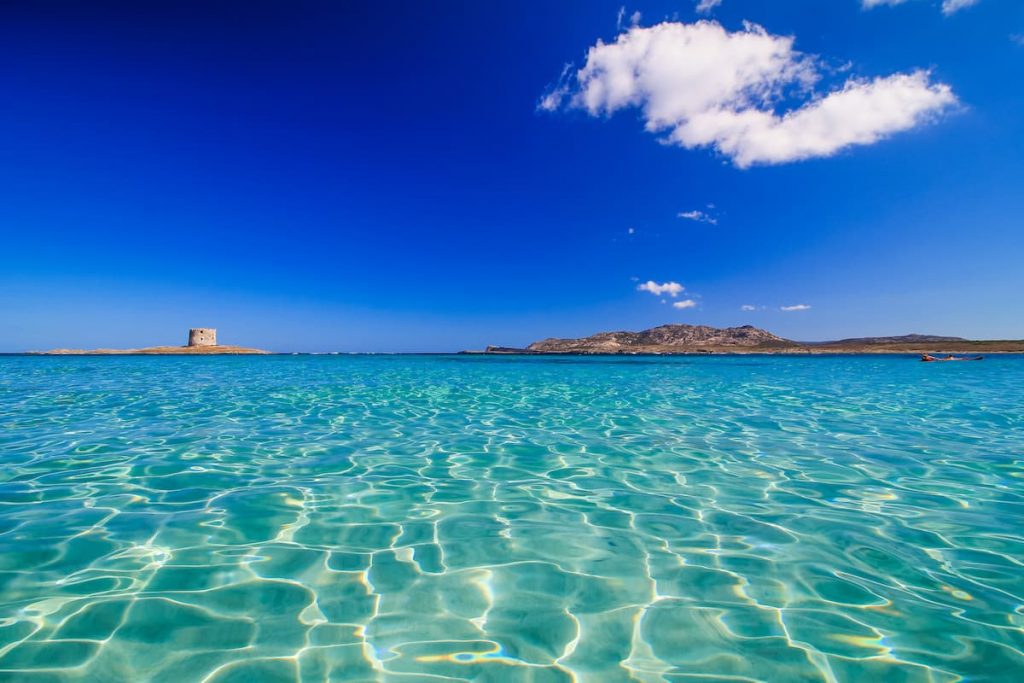
In northwest Sardinia, you can see flamingos in Stintino.
Besides Spiaggia La Pelosa, one of the most famous attractions in the Stintino is the Saline di Stintino, a saltwater lagoon just a few kilometers from the town center. This lagoon is home to a large population of pink flamingos, often seen wading in the shallow waters or flying overhead.
To get to the Saline di Stintino, you can take the SP34 road that leads from Stintino to Porto Torres. Along the way, you will see signs indicating the direction to the lagoon. Once you arrive at the lagoon, you can park your car and take a walk along the shore to see the flamingos up close.
A Few Things to Know about Flamingos
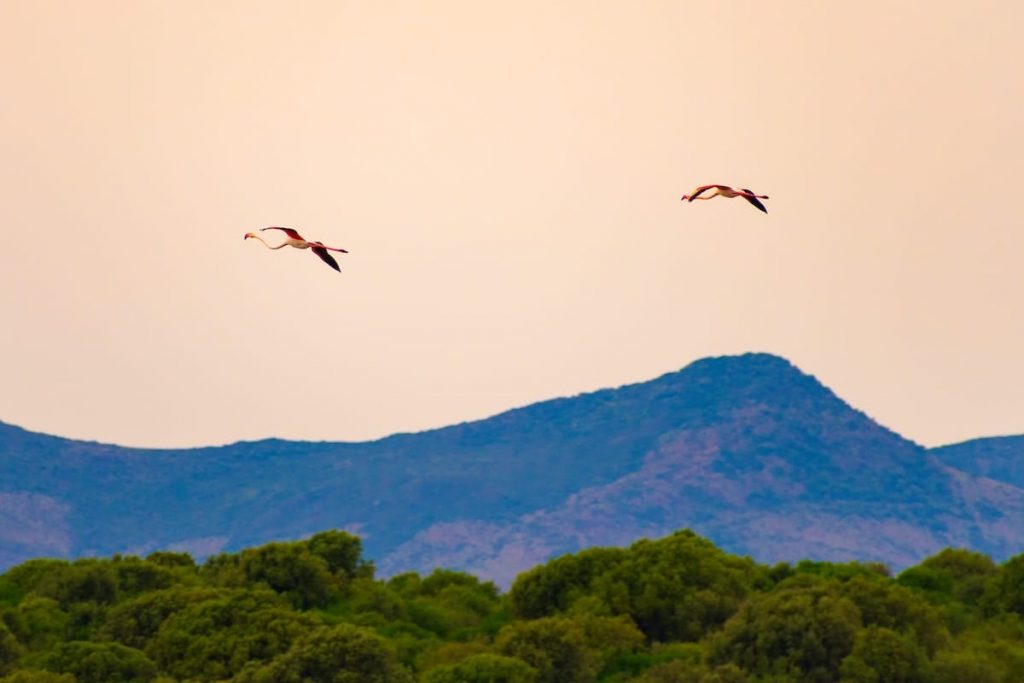
Migration
The average migration distance for flamingos from their breeding grounds in Africa to Sardinia is approximately 1,400 kilometers (870 miles). The duration of the migration can vary depending on factors such as weather conditions, food availability, and stopovers along the way. It can take several days or even weeks for flamingos to complete their migration, with some individuals traveling at an average speed of 60 km/h (37 mph).
Don’t be Dumb
Flamingos are wild birds, and their movements can be unpredictable. Please suppress the urge to get closer to the flamingos and keep a safe distance. You do not want to disturb their delicate eating and resting patterns. It is recommended to check with local tourism offices or birdwatching groups to find the best places to see them at the time of your visit.
On Being Pink
Although flamingos are born with grey feathers, they gradually develop their iconic pink hue in the wild due to ingesting a pigment called canthaxanthin. This dye is obtained from their diet of brine shrimp and blue-green algae. The palest of the species can make their feathers a brighter pink by preening.
How they Hunt
In the wild, flamingos hunt in packs, often flocking together in their thousands in the search for food around lakes and ponds. Feeding in large groups helps to create a more efficient feeding environment, as they can stir up more mud and access a greater number of food sources.
How they Eat
If you could look underwater when flamingos dip their heads under the water to eat, you would see how the long-legged, long-necked pink birds eat their food underwater and upside down thanks to the shape of their beaks!
On One Leg
The reason why flamingos frequently stand on one leg is not entirely clear, though one theory suggests that it may help them regulate their body temperature. It is essential for young flamingos to learn this behavior early in life.
Age
Flamingos have an average lifespan of around 20-30 years in the wild. However, they can live up to 50 years or more in captivity with proper care and a suitable environment. According to National Geographic, one Australian zoo flamingo lived to be 83. The exact lifespan of a flamingo can depend on factors such as its habitat, diet, exposure to predators, and environmental stressors.
Flamingo Sounds
Flamingos produce a variety of calls, including honks, grunts, and growls, which they use to communicate with one another. These calls can be heard during feeding, courtship, and other social interactions. However, flamingos are generally not known for being particularly vocal birds, and their calls are not as loud or prominent as those of some other species.
